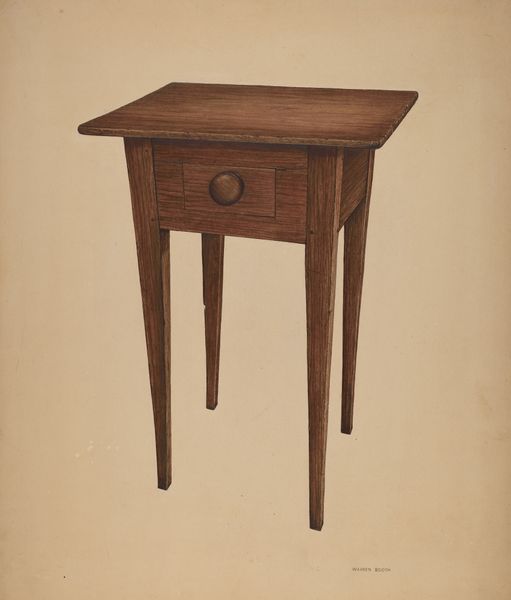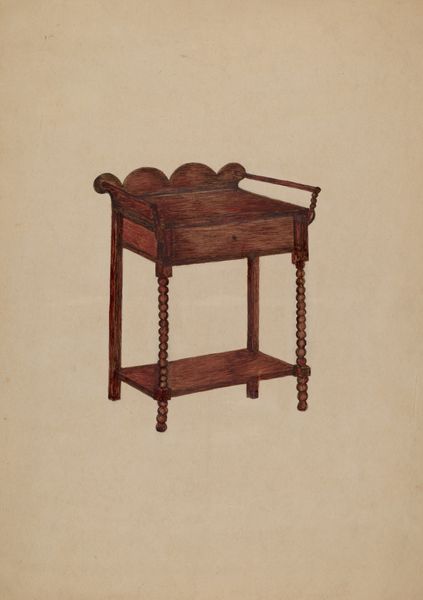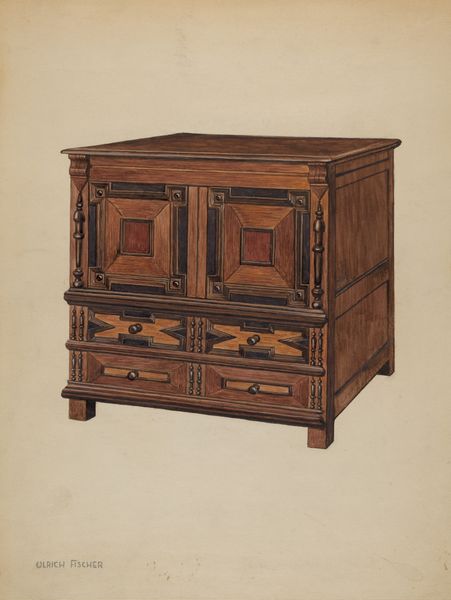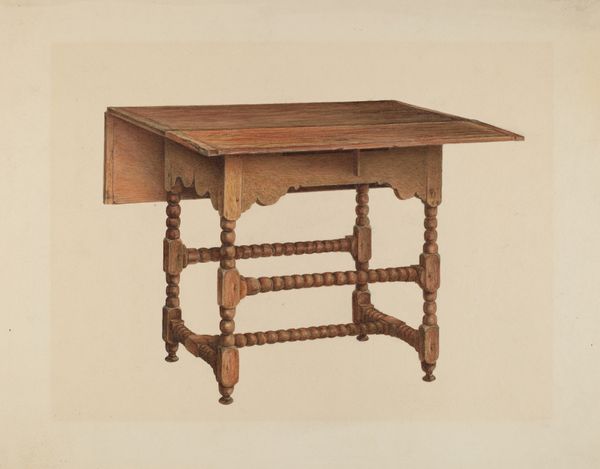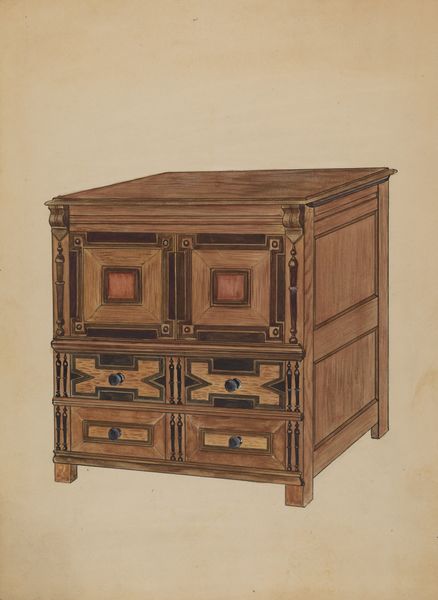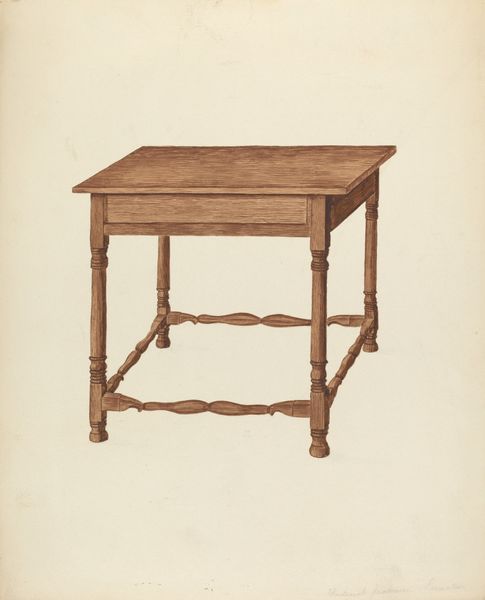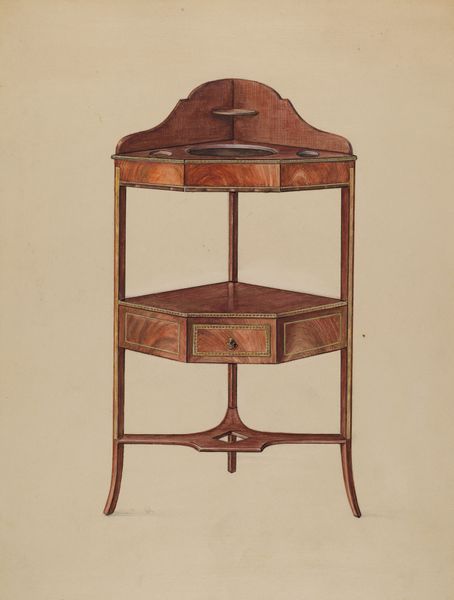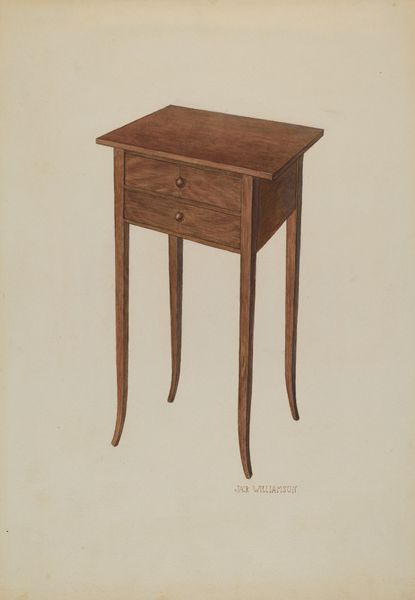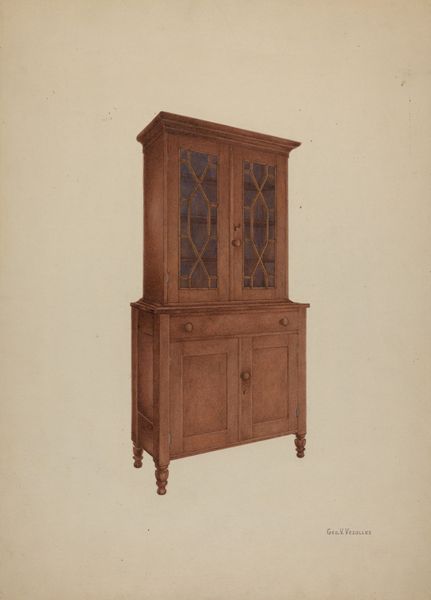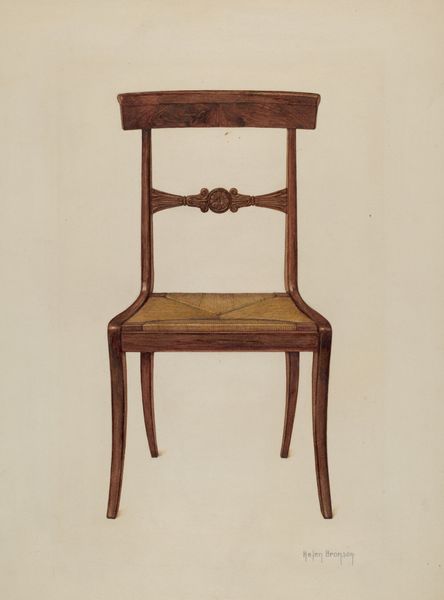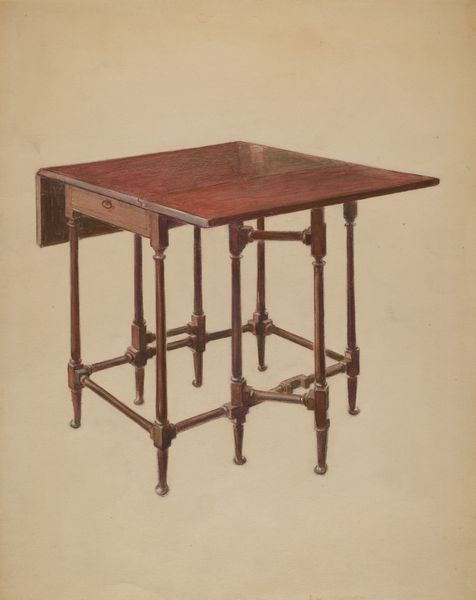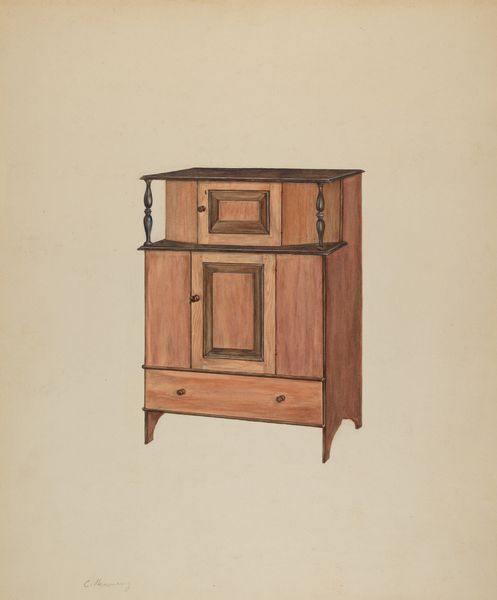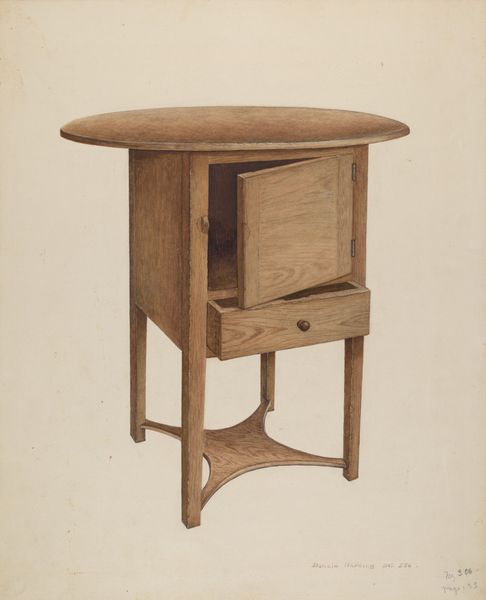
drawing, watercolor, pencil
#
drawing
#
charcoal drawing
#
watercolor
#
pencil drawing
#
pencil
#
watercolour illustration
Dimensions: overall: 28.6 x 22.7 cm (11 1/4 x 8 15/16 in.) Original IAD Object: 24"high. Top: 17"x24 1/4"
Copyright: National Gallery of Art: CC0 1.0
Curator: This drawing from 1936 by Harry Eisman depicts a "Tavern Table" in watercolor and pencil. My first impression is a quiet sort of stillness. Editor: Quiet, yes, and also a little lonely. The light catches the wood so warmly, but the isolated setting intensifies the still life genre. What kind of historical narratives are activated for you when viewing this piece? Curator: The drawing evokes the cultural politics of the 1930s in America. I immediately reflect upon the ways social spaces and communal dining changed for people. I find myself considering gendered power dynamics of taverns during this period, especially how they intersected with prohibition laws. The artist's focus also places labor and material culture in tension with domesticity and gender. Editor: Yes, you are right. When I stare at it, I can almost smell that varnished wood and stale beer of the place where this table has clearly seen some things. Maybe this specific rendering is too pristine, a romanticized ideal, rather than what actually might happen in an old bustling tavern. Curator: The clean lines might speak to the romanticizing impulse, you mentioned, yet it could just as easily represent the way material objects gain dignity during periods of economic hardship. Eisman might have felt some connection with past craftsmanship during the Great Depression. Editor: You are very insightful; the period's nostalgia could mean the creator had more in mind than what initially meets the eye. The texture feels soft and approachable too; the simple lines are beautifully realized in shades of warm browns. You just want to run your fingers along the grain of the tabletop. Curator: Exactly! The rendering encourages a tactile and even bodily relationship with an inanimate object; these are sites for thinking about individual experience, especially for women or those excluded by the assumed social and cultural habits found at that particular type of "tavern table." Editor: So the intimacy of this image lets us wonder, “What would this table tell us if it could talk?” We can begin weaving personal stories and start writing imagined tales. I can dream up lots of colorful adventures happening, some good, some not-so-good, but all worth recalling. Curator: Beautifully stated. It really opens up the chance for speculation about art, life, and society in this work.
Comments
No comments
Be the first to comment and join the conversation on the ultimate creative platform.

